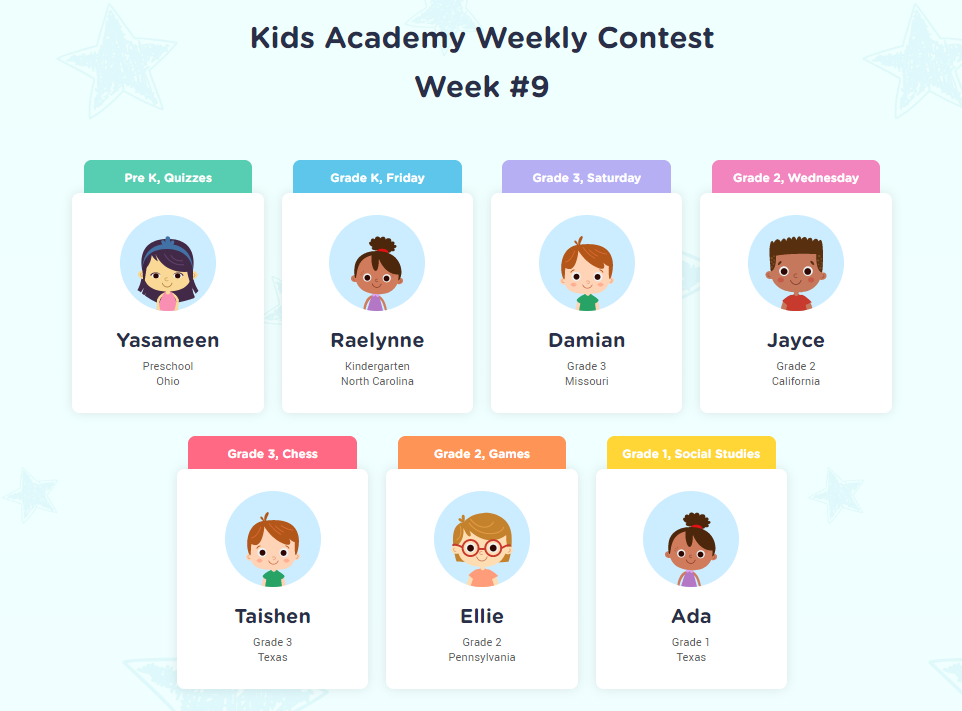Understanding pollination Normal Worksheets for Ages 6-9
4 filtered results
-
From - To
Explore our engaging "Understanding Pollination Normal Worksheets" designed specifically for children ages 6 to 9! These interactive worksheets introduce young learners to the fascinating process of pollination, highlighting the critical role of pollinators like bees, butterflies, and birds. Through colorful illustrations and simple explanations, kids will grasp the importance of plants, flowers, and the environment. Our worksheets encourage creativity, critical thinking, and hands-on activities, making learning about this vital ecological process enjoyable and educational. Perfect for classrooms or at-home learning, these resources help nurture curiosity and an appreciation for nature in young minds. Download your set today and watch your child blossom in knowledge!
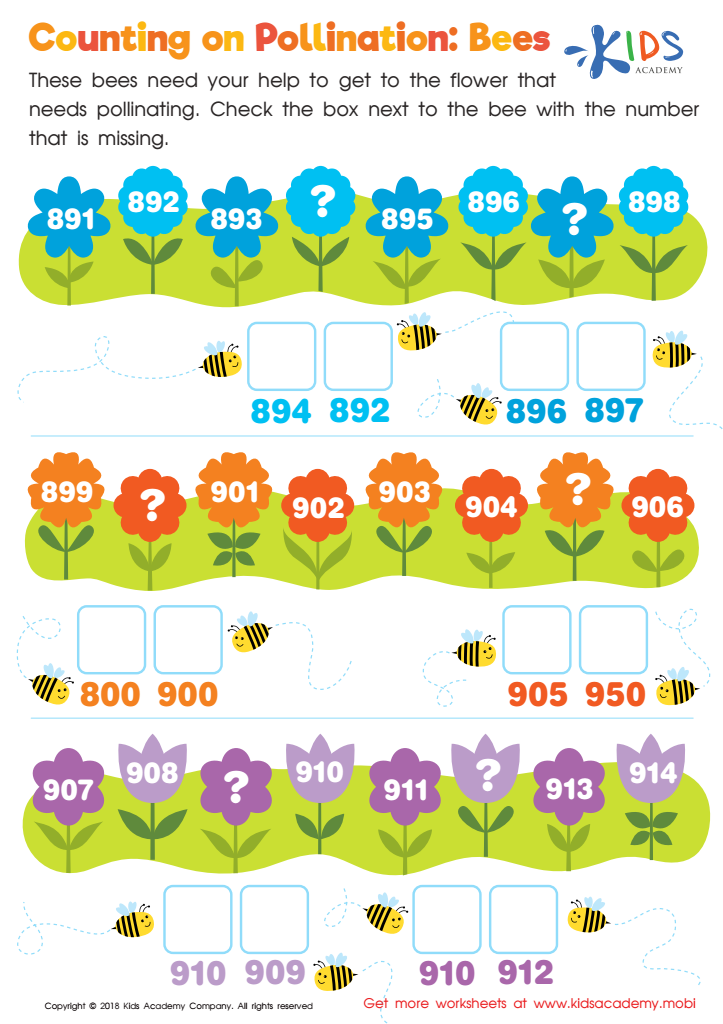

Counting on Pollination: Bees Worksheet
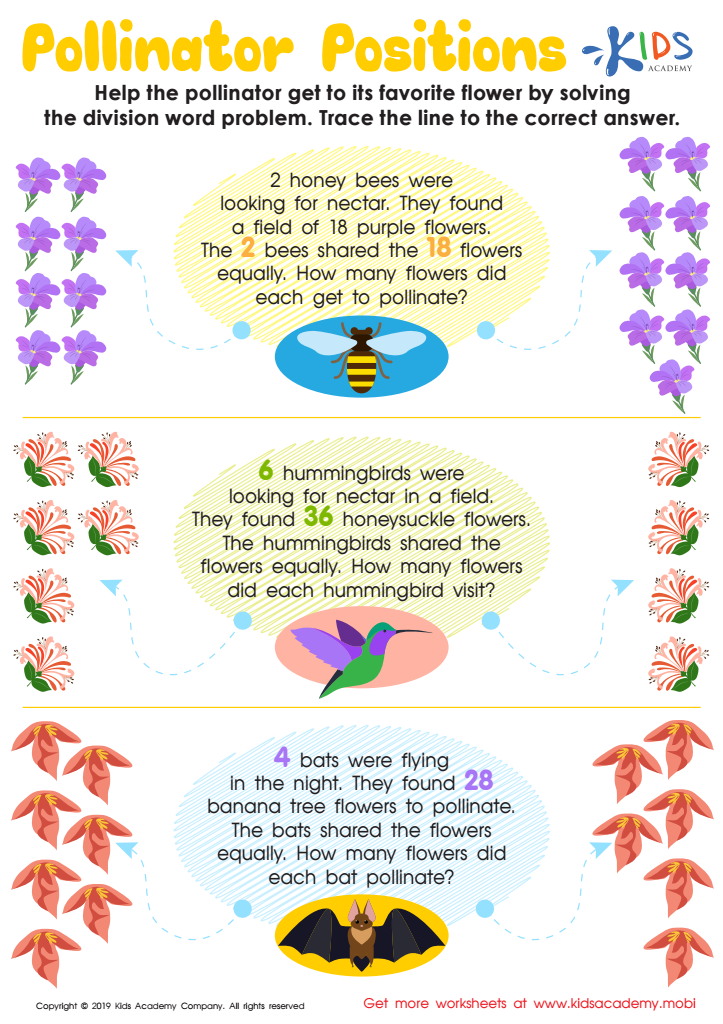

Pollinator Positions Worksheet
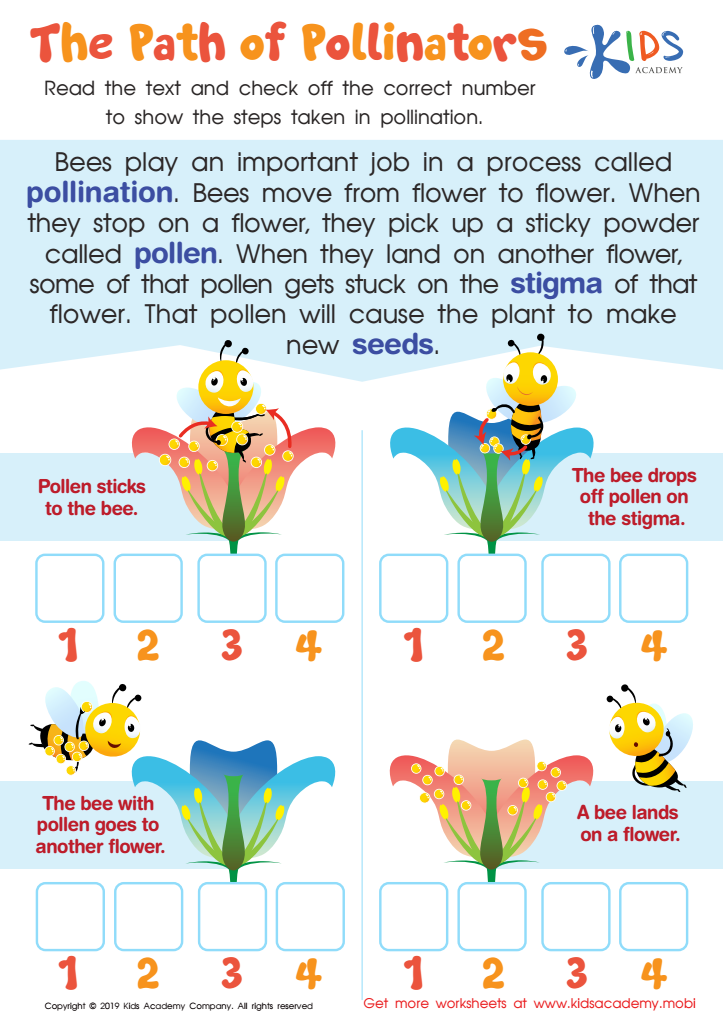

The Path of Pollinators Worksheet
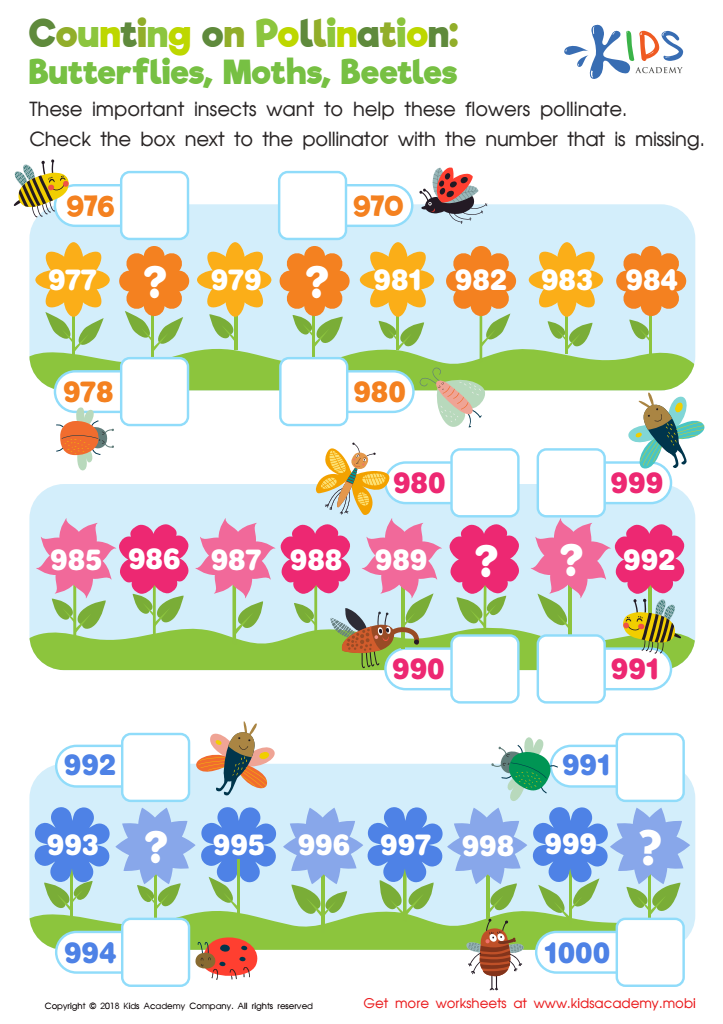

Counting on Pollination: Butterflies, Moths, Beetles Worksheet
Understanding pollination is important for parents and teachers because it connects children to the natural world around them. At ages 6-9, kids are curious about how things work. Pollination is a fascinating process where plants reproduce with the help of animals like bees, butterflies, and even the wind! Learning about this topic helps children appreciate the importance of nature and ecosystems.
When kids understand pollination, they grasp why it’s crucial for food production. Many fruits, vegetables, and nuts rely on this process, and when they grow up, they'll see how it impacts their meals. This knowledge can inspire them to care about gardening, conserving bees, and preserving the environment.
Additionally, teaching children about pollination encourages critical thinking and scientific exploration. It can spark questions like, “How do bees find flowers?” or “What happens if bees disappear?” These inquiries foster a sense of wonder and encourage hands-on learning through activities like planting flowers or building a bee hotel.
Overall, by instilling this knowledge, parents and teachers empower children to become responsible stewards of their environment, ensuring a deeper connection with nature and a greater appreciation for the simple but vital processes that sustain life on Earth.

 Assign to My Students
Assign to My Students







